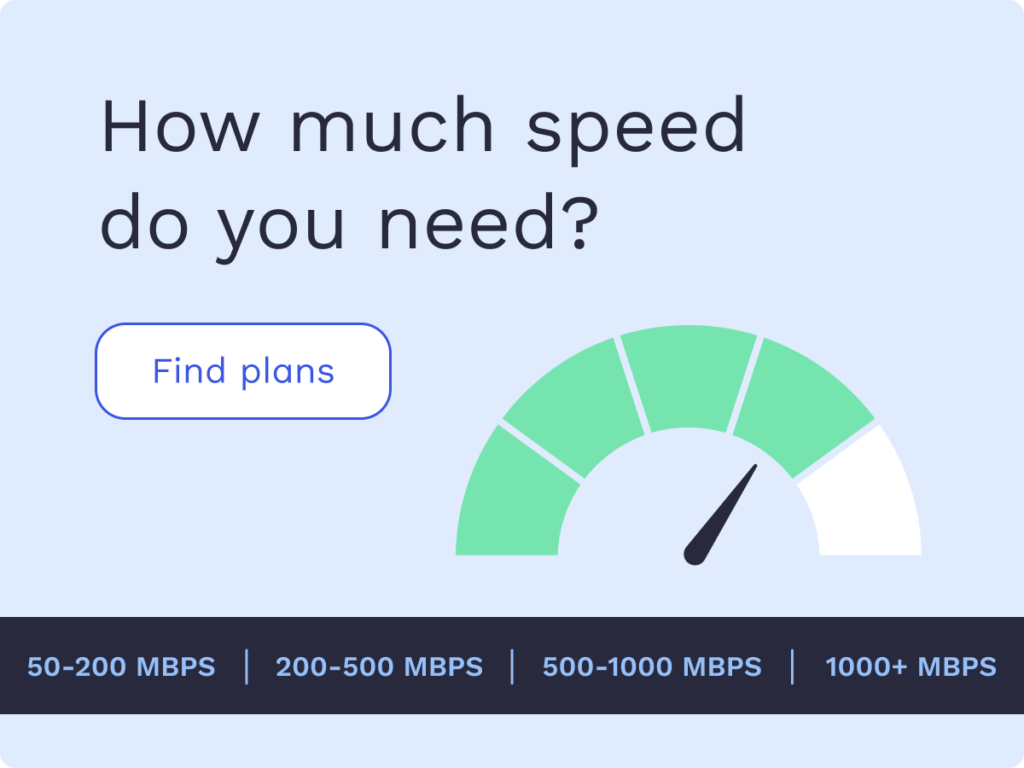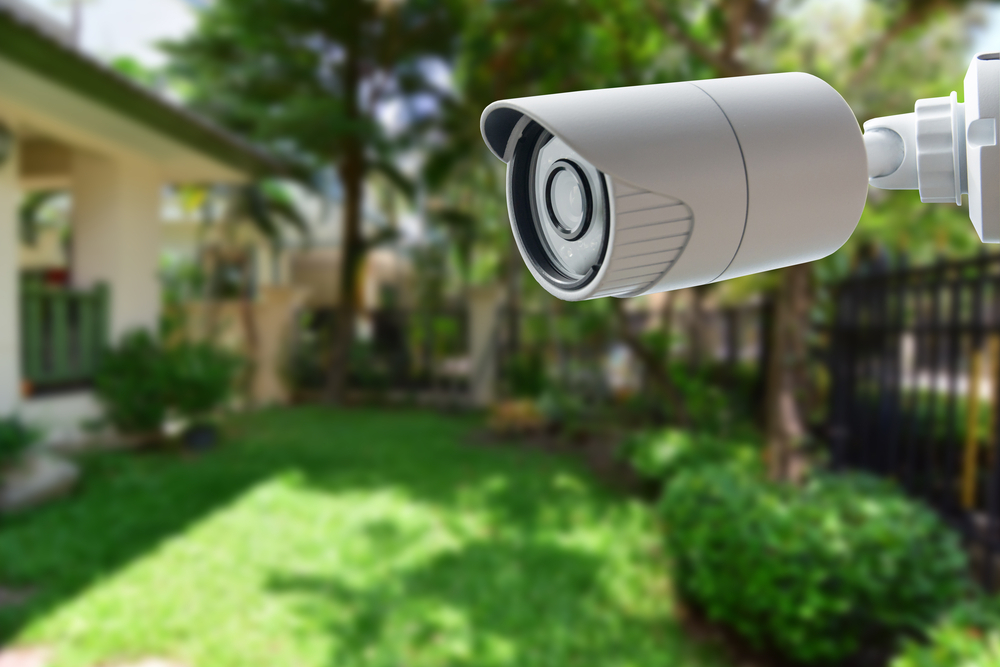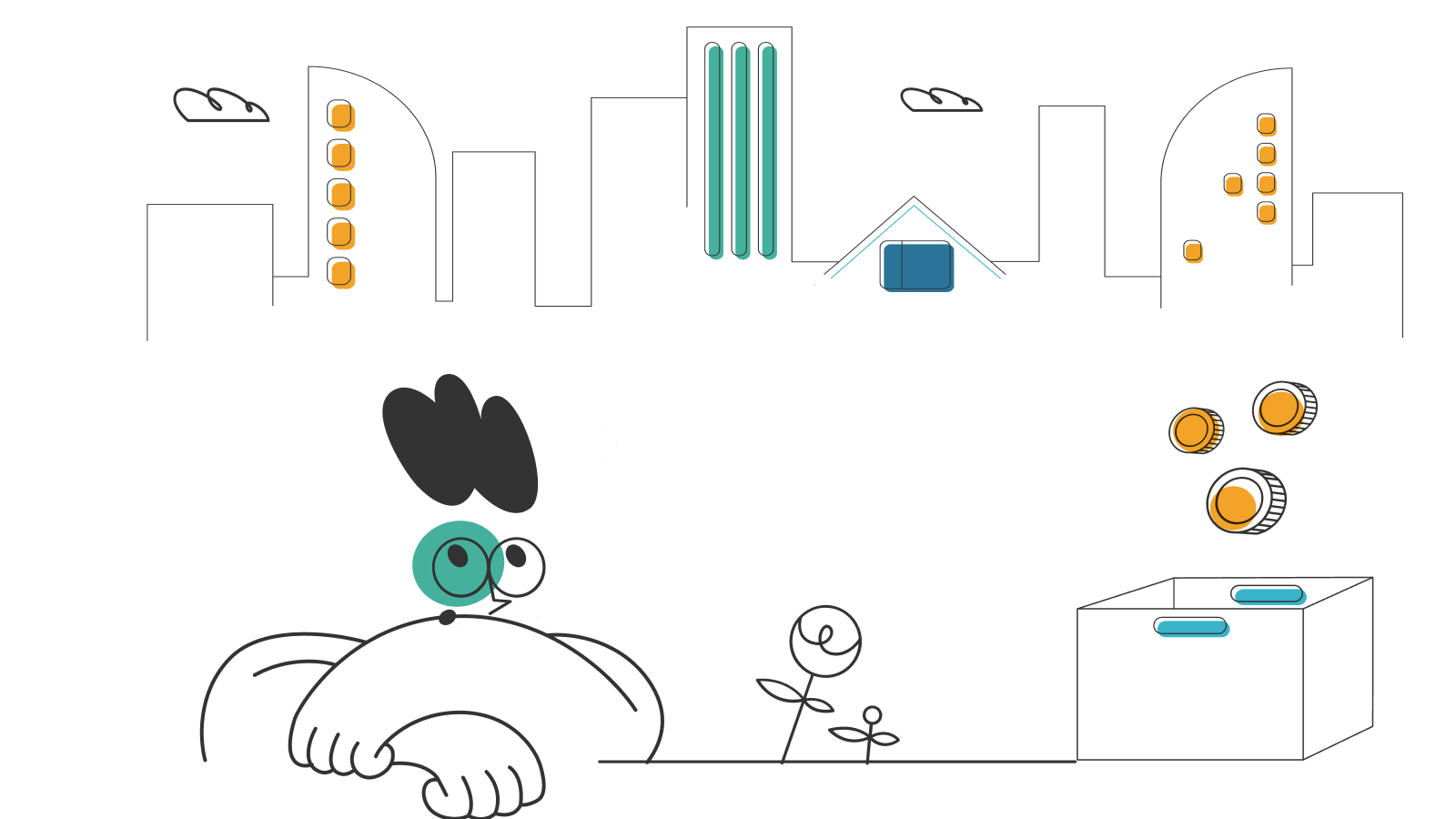Ethernet vs Internet: What’s the Difference?

Internet and Ethernet are both important parts of many homes, but there are considerable differences between their features and capabilities. The internet refers to information stored on servers all over the world, and Ethernet uses a smaller, localized network.
This comprehensive guide can help you learn about the internet, the types of internet service available, Ethernet networks, how the internet and Ethernet affect speeds, and more.
- What is the internet?
- What is Ethernet?
- How do the internet and Ethernet affect speeds?
- How to set up internet service
- How to set up an Ethernet network
- Frequently asked questions (FAQs)
What is the internet?
The internet is a network that connects computers and other devices all over the world. It lets people in different locations watch streaming content, browse websites, play online games, and more. Internet users can transfer data and communicate with anyone else who also has internet access. Vast amounts of information are available online, and many people in colleges, businesses, and homes use the internet daily.
Thousands of smaller networks form the internet, and they all send packets back and forth to each other through Transmission Control Protocol or Internet Protocol (TCP/IP). These standardized rules let computers and other devices communicate on a network such as the internet, even when the people creating different websites use different programming languages.
You may have also heard of the internet of things (IoT), which refers to the billions of physical devices that connect to the internet around the globe. These devices include everything from smartwatches to items in your home, like thermostats and lightbulbs, to smart city technologies that use sensors to monitor the local environment.
The internet uses many types of infrastructure to function, including satellites, phone lines, fiber optic cable, and cell phones. Speed and capabilities between internet connection types vary widely.
Dial-up internet
The first form of public internet was dial-up, and some people in rural areas still use it. It can transmit up to 56 kilobits per second (Kbps) through existing phone lines.
DSL
DSL or digital subscriber line service also uses phone lines, and it can transmit up to 200 megabits per second (Mbps). People can use DSL at the same time as the phone, and performance is much more reliable than dial-up.
Cable internet
Cable internet’s speed is around 100Mbps on average. It uses the same lines and other infrastructure that TV companies use for cable TV signals, and most cable internet companies also offer TV service.
Broadband
Broadband is short for broad bandwidth, and it describes many DSL, cable, and other high-speed connections that use multiple channels to send large amounts of data. However, not all DSL or cable internet service is broadband.
Satellite internet
Satellite internet service can transmit up to 100Mbps. It works well in rural areas without other internet infrastructure.
Mobile
Cell phone companies often offer wireless or mobile internet service, also called mobile data. You can access the internet on your smartphone, and you can use a home router to pick up the same signals and connect with your computer at home. Many providers offer up to 1 gigabit per second (Gbps). However, you may not be able to use this type of service if you don’t live in an area with good cell phone reception.
Wi-Fi
No matter what type of internet service you use, you can connect your computer and other devices wirelessly with a router that creates a Wi-Fi hot spot. However, the speed is usually slower than using a wired connection.
Fiber optic internet
Fiber optic internet can reach speeds up to 5Gbps or 5000Mbps, and it uses fiber optic cables. It’s mostly only available in urban areas. However, many companies are expanding their fiber service footprint to reach more customers.
What is Ethernet?
Ethernet is a closed local area network or LAN created by physical connections between computers or other devices. It uses Ethernet cables, which come in various lengths and categories. While it has similar TCP/IP protocols to the internet, Ethernet cables within the LAN transmit information. Along with sending signals between devices through Ethernet, people can also use the internet to transmit data to other locations.
Disconnecting the internet and leaving an Ethernet network running can let people communicate without letting people on the larger internet access private information or jeopardize security. The TCP/IP protocol stays restricted to systems directly connected to LAN users.
When a set of computers connect with each other over the internet, people don’t consider them part of Ethernet, whether or not they’re linked by cables. Ethernet only refers to the physical connection.
Overall, Ethernet systems are more secure than most other types of connections, and companies often use them to protect proprietary information. In their most isolated forms, Ethernet systems are entirely immune to outside intrusion because there’s no internet connection available to access them. Some people also opt to set up Ethernets in their homes.
How do the internet and Ethernet affect speeds?
The plan you select from your ISP is a primary factor driving the internet speed you receive. However, when connecting to the internet, Ethernet often performs faster than Wi-Fi, so Ethernet can potentially help you maximize your connection.
Internet factors that affect speeds
When most ISPs list speeds, they’re talking about the maximum available download speed, the speed that which the ISP can transmit information to your computer. The actual download speed may be slower than what your ISP advertises. The variation isn’t usually noticeable for high-level plans with ample bandwidth, but it may be apparent for some lower-tier packages.
Some ISPs impose data limits or caps on the amount of information you can transmit each month but unlimited plans are available as well. A soft data limit can trigger additional fees if you go over it. A hard data limit shuts down internet access until the limit refreshes at the start of the next billing period. Some ISPs also use throttling to slow down internet speed after you reach a data limit.
Ethernet factors that affect speeds
The Ethernet cables you select have a significant impact on the download and upload speeds you experience. When shopping for Ethernet cables, you’ll see designations like Cat 5, Cat 6, and Cat 7, with “Cat” standing for category. In general, cables with higher numbers support faster speeds and higher frequencies, expressed in megahertz (MHz). Newer cables support higher bandwidths, while older ones can limit the speeds you’ll receive.
Another thing to keep in mind is that longer Ethernet cables deliver slower speeds. When looking for Ethernet cables for home, you’ll typically see lengths between 10 meters and 30 meters, although professional-grade cables of up to 100 meters are also available.
The following table shows the transmission speeds and frequencies you can expect from various Ethernet cables.
How to set up internet service
When you need to set up internet service in your home, you should start by learning which providers are available in your area. If you are moving and already have an account with an ISP, you can call them to find out if transferring service is an option. Some companies offer special discounts for people who decide to transfer their service.
There are many internet service providers (ISPs) in the US, and they offer a wide range of service plans. The prices and speeds available can vary depending on your location and the discounts you can get. The best plan for your household depends on factors such as price, speed, and availability. You’ll need to consider the number of users in your household along with the types of activities you perform to understand which providers and packages are the best fit for you.
Getting to know the plans available from the most popular providers can help you make your decision. A few ISPs you may encounter in your search for internet options include:
- AT&T – With the most expansive fiber optic internet network in the United States, AT&T is a good choice for people who want fast speeds. AT&T Fiber starts at 300Mbps for $55/month. You can also choose 500Mbps for $65/month or 940Mbps for $80/month.
- Spectrum – A cable internet provider, Spectrum’s entry-level internet plan starts at $49.99/month for 200Mbps internet, and basic cable is complimentary. You can also choose 400Mbps for $69.99/month or 1000Mbps for $89.99/month.
- Xfinity – In the Western region of the US plans start at $25/month for 50Mbps. For $50/month, you can get up to 600Mbps and for $70/month, you can choose 1200Mbps or 1.2Gbps.
- Verizon Fios – A fiber internet provider, Verizon Fios offers a basic plan with 300Mbps download and upload speeds for $39.99/month. You can get 500Mbps for $64.99/month and the fastest service offers a 940Mbps download speed and an 880Mbps upload speed for $89.99/month.
- Google Fiber – Google Fiber isn’t available in many locations yet, but it offers some of the fastest internet service in the US with no data limits. You can select a 1000Mbps plan for $70/month or a 2000Mbps plan for $100/month.
How to set up an Ethernet network
To set up an Ethernet network, you’ll first need to buy an Ethernet hub and Ethernet cables. An Ethernet hub is a device with multiple Ethernet ports that can help several computers or other devices communicate. To connect one or more computers, plug in your Ethernet hub and connect Ethernet cables to the ports on the hub and your computers. Some internet routers also have the ports needed to act as Ethernet hubs.
Most modern networking components, including routers, hubs, and switches, are configured to work right out of the box. As a result, setting up your Ethernet network should be quick and easy. After you find a place that’s central to all of the computers in your home, plug your network device into the nearest electrical outlet. It’s a good idea to use a surge protector that can prevent damage from power surges or electrical storms.
If the device will allow your computers to access the internet, connect an Ethernet cable between the network device’s uplink or modem port and your broadband modem. Fortunately, connecting an Ethernet network is extremely simple. Often, you can create an effective network for gaming, working at home, or other tasks in an hour or two.
As a final step, you should ensure that all the computers you plan to connect to your Ethernet have effective antivirus software. Before connecting devices to your Ethernet network, you should run a scan to catch any viruses or malware that could spread from one device to your other equipment. Periodic scans of your devices can help keep your network secure and prevent unwanted data loss or equipment failures.
Frequently asked questions (FAQs)
Do I need internet and Ethernet in my home?
Many people need the internet to stream videos, browse websites, work, and take care of other tasks. While most people don’t have to have home Ethernets, some choose to install an Ethernet network for additional security or improved internet performance. In many cases, an Ethernet can transmit data faster than the internet, making it useful for local networks.
Is Ethernet better than internet?
Ethernet is not better than the internet, it serves a different purpose. While the internet connects devices globally, each Ethernet network operates in a small area and is usually disconnected from the internet.
Can I use Ethernet and Wi-Fi?
You can use Ethernet and Wi-Fi at the same time. They won’t interfere with each other.
Is 5G Faster than Ethernet?
You can use a 5G hotspot to turn a mobile connection into Wi-Fi that works well for gaming and other high-speed tasks. However, the connection speed is faster with a local Ethernet network connected by physical cables.
Can I use Ethernet without the internet?
You can use an Ethernet connection without internet access. However, you can only communicate with computers and other devices on the Ethernet network. These are usually in the same location. You won’t be able to look at your local news, send an email, or watch movies online without the internet. If all the computers involved have the same software, you can play games with sophisticated graphics through only Ethernet.
*Pricing varies by location and availability. Speeds may vary. All prices subject to change; for current pricing and availability visit our internet service page. Prices as of 3/28/22.
Disclosure | Updater articles are based on our own data and research, independent from partner relationships. We are not compensated by partners for information and opinions presented here. Our Editorial Terms of Service can be found here.














